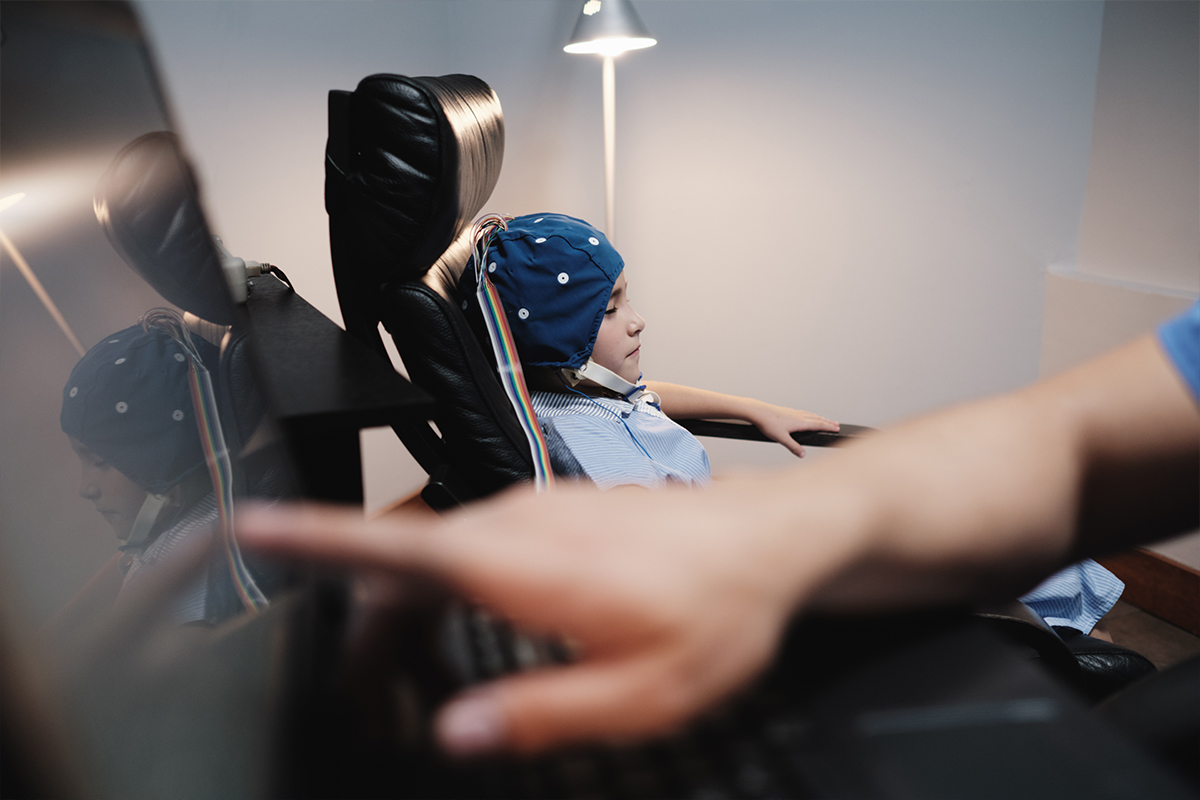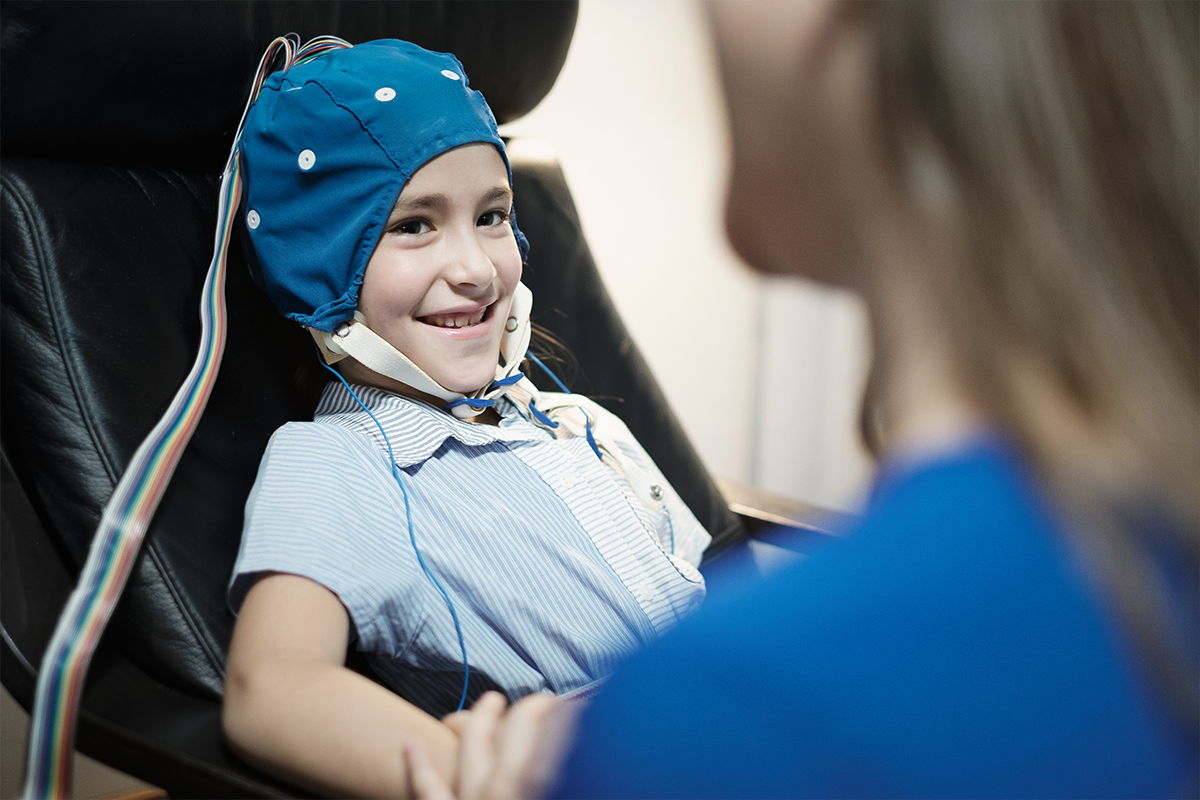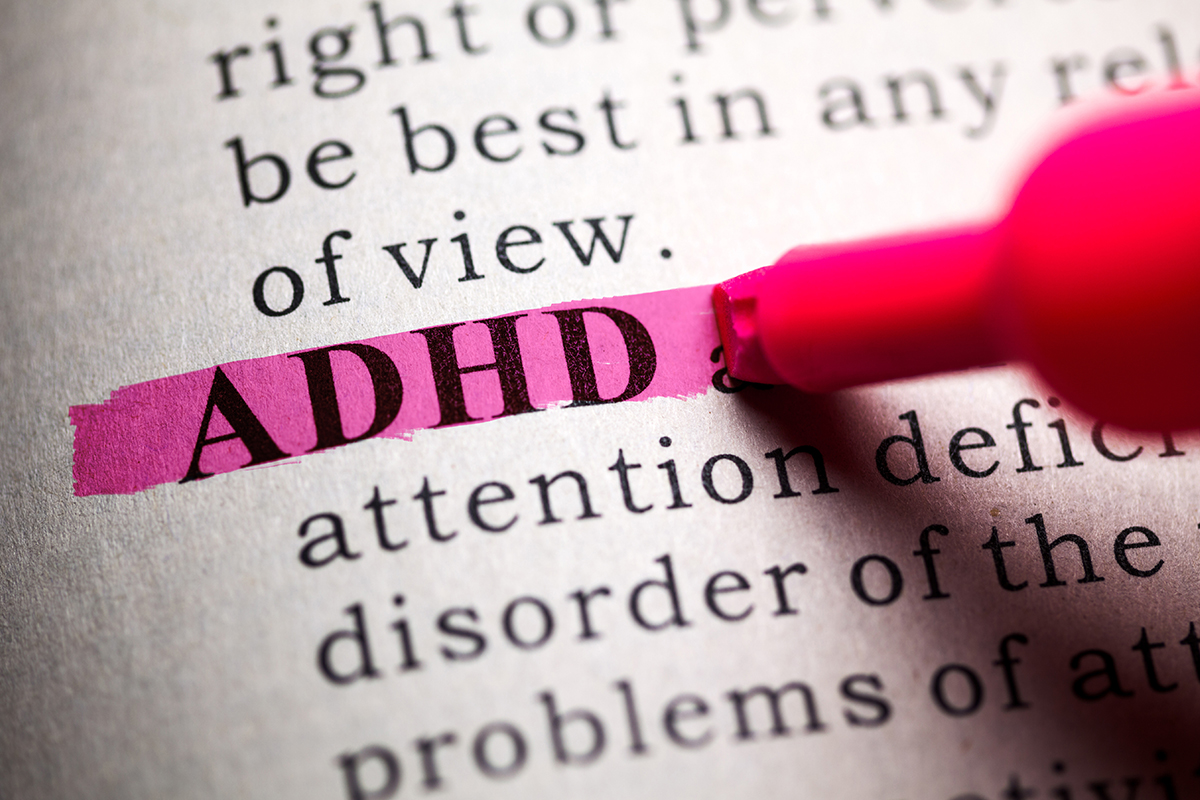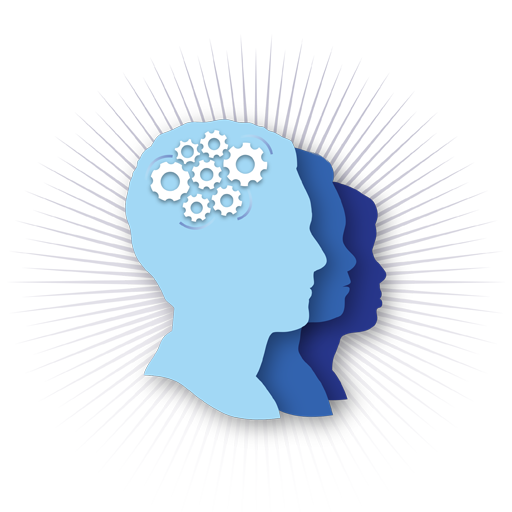
Reap the Benefits of Neurofeedback
FOR IMMEDIATE RELEASE
(Chicago, Illinois, 17 January 2012)
A Neurofeedback session typically begins with a quantitative EEG. The EEG is done with the use
of sensors that are placed on top the head, and it is intended to measure brainwave activity.
This information will be used as a reference and an indicator of how your brainwaves are
affecting your train of thought. From then on, the professional therapist will create a therapy
that is tailored especially for your own needs. A person who is undergoing Neurofeedback
is called a “trainee,” basically since the patient is being trained by the therapist to modulate
brainwave activity and achieve certain results. These results are almost instantaneous but
more often not trainees are not aware of these changes immediately, but they certainly can
observe changes in their state of mind even outside the Neurofeedback session. The training
will specifically teach a person to maximize activity in certain frequencies while keeping down
others in a bid to regulate or balance the frequencies so the brain is not overloaded with too
much activity.
With the help of Neurofeedback, a person can achieve relaxation as well as minimization of the
brainwave activity that is causing him or her to be constantly anxious, irritated or suffer lack
of calm in most situations. In fact, according to the International Society for Neurofeedback
and Research, the Neurofeedback therapy is ideal for people who are suffering from attention
disorders like Attention Deficit Hyperactive Disorder as well as Epilepsy. The Institute is also
undergoing research to determine the effects of the therapy on people who have Autism,
headaches, insomnia, anxiety, substance abuse, TBI and other pain disorders. So far, the ISNR
is saying that the results of their research into these disorders are “promising.” There are more
grounds being gained each day in research and the Cognitive Solutions approach can prove this.
One great thing about undergoing Neurofeedback therapy is the fact that it is non-invasive and
requires no medicine. The CSLC approach stresses non-medicinal in all that we do. It does not
require surgery, so you can walk out of the clinic normally and go about your business like it
did not happen at all. Of course, you will be stepping out of the therapist’s clinic feeling like a
new version of yourself thanks to the training you get from the Neurofeedback center at CSLC.
Several people who have gone through the process have seen tremendous results. (see our
about us page). Testimonials from successful trainees have shown that Neurofeedback has had
a positive effect on their lives and daily functioning, which means that Neurofeedback really
works and no matter what state your are in, it is always beneficial.
If you are interested in undergoing Neurofeedback training, contact Cognitive Solutions
Learning Center Inc. The Center is located in Chicago, Illinois. Contact the center by calling us
at phone number (773) 755-1775, or use the contact form found online at www.helpforld.com.
With Cognitive Solutions, you are sure to experience a positive change in your life.
Contact:
2419 N. Ashland Ave. Chicago, IL 60614
Phone: (773) 755-1775
Info@helpforld.com

Neurofeedback for ADHD
Neurofeedback: A Form of Biofeedback
Neurofeedback is known by several names, including
neurotherapy and EEG biofeedback. As the latter name
implies, it’s a type of biofeedback.
Biofeedback is described by the National Institute of
Mental Health as “a treatment technique in which people
are trained to improve their health by using signals from
their own bodies.” The signals are detected by electrodes
attached to the body to measure heart rate, blood pressure, muscle tension, skin temperature, or other functions. A biofeedback machine monitors these signals and
displays the results for both the trained practitioner and
the patient to see. With this information, the practitioner
can teach a patient to alter these bodily functions by relaxing or by bringing pleasant images to mind.

Do synthetic food colors cause hyperactivity?
Critics blame the additives for triggering behavioral problems in youngsters
Food coloring is the reason glace cherries are red rather than beige and that children’s tongues sometimes appear freakishly blue. But man-made dyes may do more than make processed food look vibrant and whimsical. Some blame the additives for triggering behavioral problems in youngsters.
Acting on research published in the Lancet, the European Parliament last year began requiring products containing synthetic food colors to carry warning labels saying that “consumption may have an adverse effect on activity and attention in children.”
Now, the U.S. Food and Drug Administration has scheduled a March hearing on whether food dyes adversely impact children’s health. The Center for Science in the Public Interest, or CSPI, is asking the agency for a synthetic food-dye ban and to place warnings on products until the colors are removed.
The dyes are often used to enhance the appearance of sugary cereals, candies, sodas, fruit-flavored snacks, fast food and other products that are aimed at children and have little nutritional value, the CSPI said in a citizen’s petition signed by 18 physicians and researchers. Since naturally derived alternatives exist, the continued use is hardly worth any potential risk, it said.
“What’s the benefit? To make junk food even more appealing to children than it already is?” asked CSPI Executive Director Michael Jacobson.
Other experts say food dyes, which require pre-market approval, are among the most tightly regulated additives on the market and there’s little evidence for the long-suspected link between food colors and hyperactivity.
“The (synthetic food dyes) used in the U.S. are absolutely safe,” said Joseph Borzelleca, a professor emeritus of pharmacology and toxicology at Virginia Commonwealth University School of Medicine. “Food colors are among the most thoroughly studied of the food ingredients.”
That hasn’t always been the case. Originally, naturally derived ingredients were used to make food look more appealing — saffron, for example, gave rice a yellow tint. In the 1850s, manufacturers began using long-lasting coal-tar dyes to brighten both fabric and food, a practice that sickened countless unsuspecting consumers.
Nearly 200 substances were in use when safety testing was finally required in 1960; only a handful survived the testing process.
Today, the nine synthetic hues approved for use in food — meaning they’ve been certified by the FDA — are used primarily to help restore the color washed away by industrial processing, even out natural variations and make foods look more appealing or “fun.”
Manufacturers also can use dyes made from plant, animal or mineral sources, such as beets, caramel color or grape color extract, but the petroleum-based colors are cheaper and can be more consistent.
“The content of a natural color like grape skin varies, depending on where they’re grown, the season, the kind of chemicals used and harvesting,” said Borzelleca. “But with approved colors you’re getting the same thing every time.”
Synthetic food colors have been suspected of triggering behavioral problems in children since the 1970s, when pediatric allergist Ben Feingold began treating allergies by putting children on elimination diets, free of both synthetic food dyes and preservatives. But Feingold’s ideas, now touted as a way to treat children with attention-deficit disorder, were never convincingly substantiated.
The issue resurfaced in 2007 after University of Southampton researchers reported in the Lancet that hyperactive behavior increased in two groups of children — age 3 and ages 8 and 9 — when they consumed two different mixtures of artificial colors, plus a preservative.
Unlike previous studies, the Southampton research found the effect in children from the general population, not just those whose parents suspected they were sensitive to food dyes. And the study didn’t just rely on parental ratings of their children’s behavior, which can be subject to bias; it also used ratings generated by teachers, researchers and computers.
The British Food Standards Agency, which commissioned the trial, subsequently advised concerned parents to reduce or eliminate six colorings from their children’s diets. A committee of the European Parliament then voted to ban all synthetic dyes from foods consumed by babies and small children.
The FDA still maintains there’s “no evidence” of a link between dyes and hyperactivity. When it reviewed the Southampton study, the agency “found no information to suggest that the behavioral changes noted were adverse, detrimental or maladaptive.” One of the study’s shortcomings, the FDA said, was that it used a mixture of color additives and the preservative sodium benzoate, making it impossible to know which individual additive was responsible for the effect.
Learn More
Treating ADD and ADHD Without Drugs: Cognitive Solutions Learning Center in Chicago Offers Non-Medicinal Alternatives
Cognitive Solutions Learning Center, a Chicago based clinic, offers a specialized approach for treating Attention Deficit Hyperactivity Disorder without the use of medication.
Chicago, IL, September 02, 2011 –(PR.com)– Ari Goldstein, PhD, founder and director of the Cognitive Solutions Learning Center in Chicago, noticed an enormous spike over the past ten years in referrals he received for diagnosis of attention deficit disorders such as ADD and ADHD. Sometimes symptoms would manifest as disruptive behavior at home or at school; sometimes academics were overwhelming due to inability to focus.
What troubled Dr. Goldstein, who has a PhD from the University of Illinois in Educational Psychology and a Masters in Learning Disabilities, was that when the child received a diagnosis of ADHD (Attention Deficit Hyperactivity Disorder), of which ADD (Attention Deficit Disorder) is a subcategory, that child would almost certainly end up on medication.
It’s estimated by the Institutes of Mental Health that 9% of the school-aged population – mostly boys – have the disorder. That’s over two million children. And that’s conservative, according to Dr. Goldstein. “If all these kids are put on meds, that seems scary to me as a parent,” he says.
Dr. Goldstein became interested in researching the availability and effectiveness of non-medicinal treatments for attention disorders. Through his research, he came across methods he has put together successfully to help children and adults without medication.
ADHD/Add One
Dr. Goldstein and his Cognitive Solutions team of professionals, which includes learning specialists, speech and language pathologists, and a clinical neuropsychologist, have developed a multifaceted, noninvasive approach to treating what he calls a disability of regulation.
“People with ADHD, whether children or adults, have difficulty in regulating and controlling their behaviors, actions, thoughts, problem solving, and such,” Dr. Goldstein explains. “To treat the disorder, we need to know how the problems in regulation are manifesting and then develop an individualized plan to address the deficits.”
Emphasizing that “We’re actively treating the deficit, which offers a long-term solution,” he points out that what he opposes is over-use of medication, not medication itself. He suggests pharmaceuticals as an alternative to consider where a child’s behavior is destructive to himself or others, or to clients who have shown no improvement after following the non-medicinal protocol diligently for four to six months.
After a thorough evaluation including batteries of tests, if it appears an ADHD diagnosis is appropriate, he will send the client for a metabolic screening to rule out possible underlying blood-related causes for symptoms similar to ADHD, such as blood sugar regulation difficulties, under or over active thyroid or lead poisoning.
The first prong of Dr. Goldstein’s non-medicinal approach is nutrition and supplementation. “What we put into our bodies has a tremendous role in how our brain functions,” he declares. Sugar exacerbates ADHD symptoms. “The more stable the blood sugar level, the better their attention and the less of the anxiety experience which is often a part of ADHD,” he says.
Removing processed foods from one’s diet and testing for and eliminating food allergies can also make a huge difference. “Food allergies is an auto-immune disease: the body is attacking itself,” he explains. “This can cause depression, anxiety and negatively affect one’s capacity for attention and learning.”
Supplementing diets with Omega 3 fish oil from fatty fish like salmon and sardines supports enhanced brain function: “Many Americans are deficient in this,” he observes. Likewise, pro-biotic foods like live culture yogurts improve general health and cognitive functioning.
The second prong is exercise and sensory input. “Exercise helps balance the chemicals in our brain,” he asserts. This is especially important if a child is spending lots of time in front of video games, TV and computers. From the earliest days, these devices wreak havoc on our attention span: “If a child spends more than two hours a day engaged in these pursuits, there is a greater chance of developing ADHD,” he warns. He attributes the spike in diagnosis at least in part to children getting used to such constant and rapid media stimulation that it’s hard to adjust to the real world.
He also advises that young boys diagnosed with ADHD often are hungry for sensory stimulation. He might put them on a diet with crunchy foods, and suggest activities like swinging on a swing and swimming, both to work off energy and calm them down. Tae Kwon Do is recommended as an excellent vehicle for engaging in physical activity with others, while instilling discipline and focus.
The third prong of Dr. Goldstein’s program is executive functions training. These functions have a number of components that are found in the frontal lobe, from cognitive planning to physical organization, from controlling emotional outflow to working memory. Developing cognitive organization leads to physical organization, Dr. Goldstein says.
A thorough evaluation of these functions by a learning specialist will show which areas need to be addressed. “A pill can help the behavioral and academic aspects, but it is short lived,” he says, “so we do a child disservice when we do not train them in specific executive function skills.” Parents can support this development as well through ensuring their children have structure and routine, which are comforting, and logical consequences where behaviors require modification.
The fourth prong, which Dr. Goldstein describes as the leading non-medicinal treatment for ADHD, is neurofeedback. “We’ve consistently seen tremendous and dramatic results from this,” he enthuses. He explains that the brain is an electrical matrix with different signals being sent, but the signals may not be functioning optimally. He describes the neurofeedback process as being like a video game the child plays with their mind. Initial brain imaging [QEEG] helps to show what is functioning optimally and what is not.
“Neurofeedback provides training to recognize what a brain wave state feels like, so we can shift it more easily,” he explains. This teaches children with ADHD how it feels to shift their brain from a relaxed to an attentive state. “We’ve seen tremendous change, and not just in the behavioral and academic aspects of children with ADHD,” he says. Adults go off depression meds, athletes improve their peak performance, surgeons learn to move “into the zone” for their surgery. Clients typically undergo 20 to 40 sessions which are presented on a twice a week basis.
Dr. Goldstein’s enthusiasm for neurofeedback is echoed by Catherine Tipping, whose son Rowan has been diagnosed with ADHD and started his treatment with Dr. Goldstein a year and a half ago. At that time, six-year-old Rowan manifested focus issues that affected his schoolwork. “From the initial and intensive battery of diagnostic tests to the recommendation he get special glasses from a visual processing expert and twice-weekly neurofeedback sessions, the change has been nothing but positive,” she declares.
She credits neurofeedback for much of the improvement, but adds that minor dietary adjustments, such as yogurt shakes and fish oil supplements, and signing Rowan up for Tae Kwon Do also have helped him to be calmer and focus better. Moving from “really struggling,” his last report card was nearly all As and Bs. Now in second grade, he continues his neurofeedback sessions with neuropsychologist Dr. Sam Effarah and sees a Cognitive Solutions learning specialist weekly to help him to organize his thoughts on paper.
Tipping was so impressed with the neurofeedback portion of the treatment that she herself has undergone treatment to combat sleep issues and a family history of depression. “I do feel calmer,” she says. She has also started Rowan’s twin sister, Gemma, who is accelerated academically but “a little hyper,” as well. “The kids think it’s fun, like a computer game,” Tipping smiles.
It does take more time, expense, and intensive involvement with your kids to deal with attention deficits using this multi-pronged, non-medicinal approach, according to Dr. Goldstein. And not every client chooses to utilize all four prongs. Those who do, like Tipping, are big advocates of the approach.
“We’ve seen great changes in him,” says Tipping about son Rowan. She advocates ruling out all other options before risking side effects of pharmaceuticals that can clinically affect your child, asserting that in her family’s experience, “the Cognitive Solutions approach offers a great alternative to automatically going the medications route.
“This shows there are other options out there,” Tipping declares. “It takes more time, but it’s so worth it!”
Cognitive Solutions Learning Center is located at 2419 N. Ashland in Chicago. The phone number is (773) 755-1775 and web address is www.helpforld.com.
Source: http://www.pr.com/press-release/350430
Learn MoreTestimonial – J.H.
I found Dr. Effarah after visits with several ophthalmologists and neurologists following a nasty head injury that resulted in a severe concussion. All of the other doctors told me that my problem, halos around lights at night, was something I was going to have to learn to live with. The last ophthalmologist told me about Dr. Effarah, saying that he had helped his nephew with ADHD and maybe he could do something for me. I called Dr. Effarah and described my problem. He felt that it was something he could help me with using neurofeedback. Shortly after I started treatment, I began to experience brief periods of time when the problem disappeared. The periods of time soon became longer, and then the problem disappeared completely. I continued working with Dr. Effarah on an auditory processing problem that was identified through the initial brain map. Dr. Effarah is extremely dedicated and knowledgeable about neurofeedback. His skill and dedication made a very large difference in my life.
J.H. Chicago, Illinois
Testimonial – J.F.
I can’t say enough about Dr. Effarah and Cognitive Solutions Learning Center. I heard of neurofeedback from a friend and decided to check it out. My daughter had a learning disability and was attending special education classes all through grade school. I was spending $100’s on tutoring as well. Although I noticed some improvement, it wasn’t enough to get her grades above a C. Then I found CSLC and I felt like the mom in the Sylvan commercial. We started my daughter on neurofeedback sessions in the middle of 7th grade. She was never able to get above a C on her report card, but by the end of 7th grade her grades were gradually getting better. By the end of 8th grade she had A’s and B’s. Now she is a senior in high school, has been on the honor roll every year, and she holds a GPA of 3.9. Anyone that has ever struggled with a learning disability should speak to CSLC. It will change your life, and that is no exaggeration.
Thank you so much Dr. Effarah!
J.F. Chicago, Illinois
Testimonial – L.B.
From the time he was a pre-schooler, it was evident that my very bright son had learning challenges. While he was generally successful in school, he had to work longer and harder than his peers, and his self-esteem was affected. For several years, I sought testing through our public school to identify underlying learning disorders. The school psychologist repeatedly indicated my son was fine and no additional testing was needed. We sought educational testing at Cognitive Solutions to get to the bottom of things. Dr. Goldstein comprehensively tested our son, and determined that he had several discrete, subtle learning problems which could be addressed with specific strategies and minimal school accommodation. Our son was tremendously relieved to have confirmation that he was bright and there were easy ways to be less stressed and more successful. As a result of the services we received at Cognitive Solutions, our son scored well on his high school admission tests, and was accepted in outstanding private and public high schools. He is a happy, successful freshman at a wonderful magnet high school. The educational recommendations which Dr. Goldstein offered are being implemented by the school. We know that we can return to Cognitive Solutions should we have future concerns. Dr. Goldstein and his staff were both brilliant and kind. It was wonderful to have such dedicated allies in assisting our child. We cannot say enough about how valuable Cognitive Solutions has been to our son’s success.
L.B. Chicago, Illinois
Testimonial – A.O.
Cognitive Solutions has been an amazing asset to our family. I found CSLC on the internet after a lengthy search for qualified evaluators and tutors in the Chicagoland area. Our eldest son was have learning difficulties that needed addressing by qualified professionals. Dr.Goldstein walked us through the process of having our eldest son tested and recommended Jim Gottschalk to work with him. It was a pleasure working with Jim, and our son thoroughly enjoyed the time he spent with him. Jim seemed to really connect with him and bring out the best in his abilities and strengthen the areas he needed help with. Jim has given our son many invaluable tools to help him continue to succeed in school. We have seen an amazing transformation of a child who struggled with grades and performance to a child now getting 9 A’s and 1 B+ on his last two report cards.
A.O. Chicago, Illinois
Learn More
